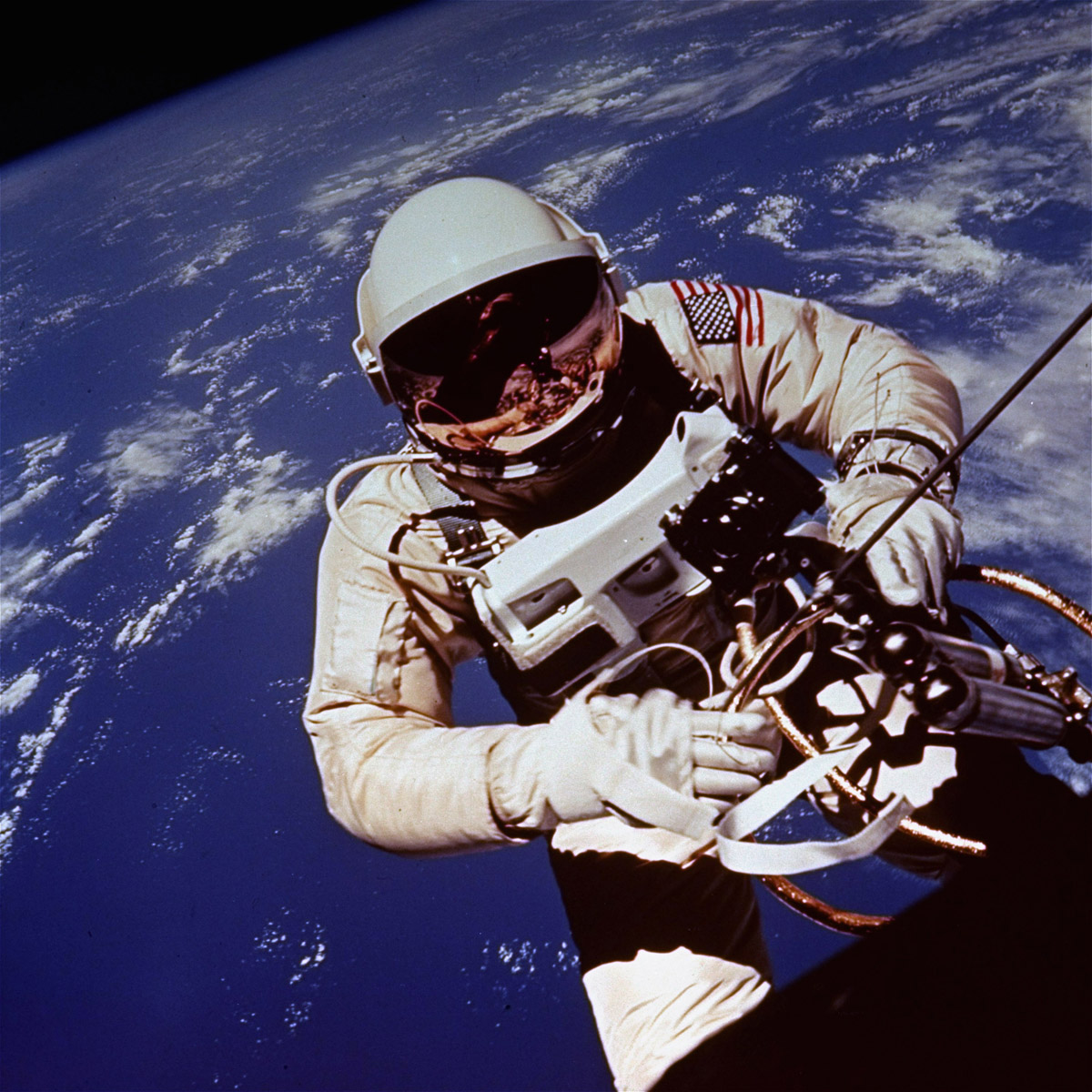
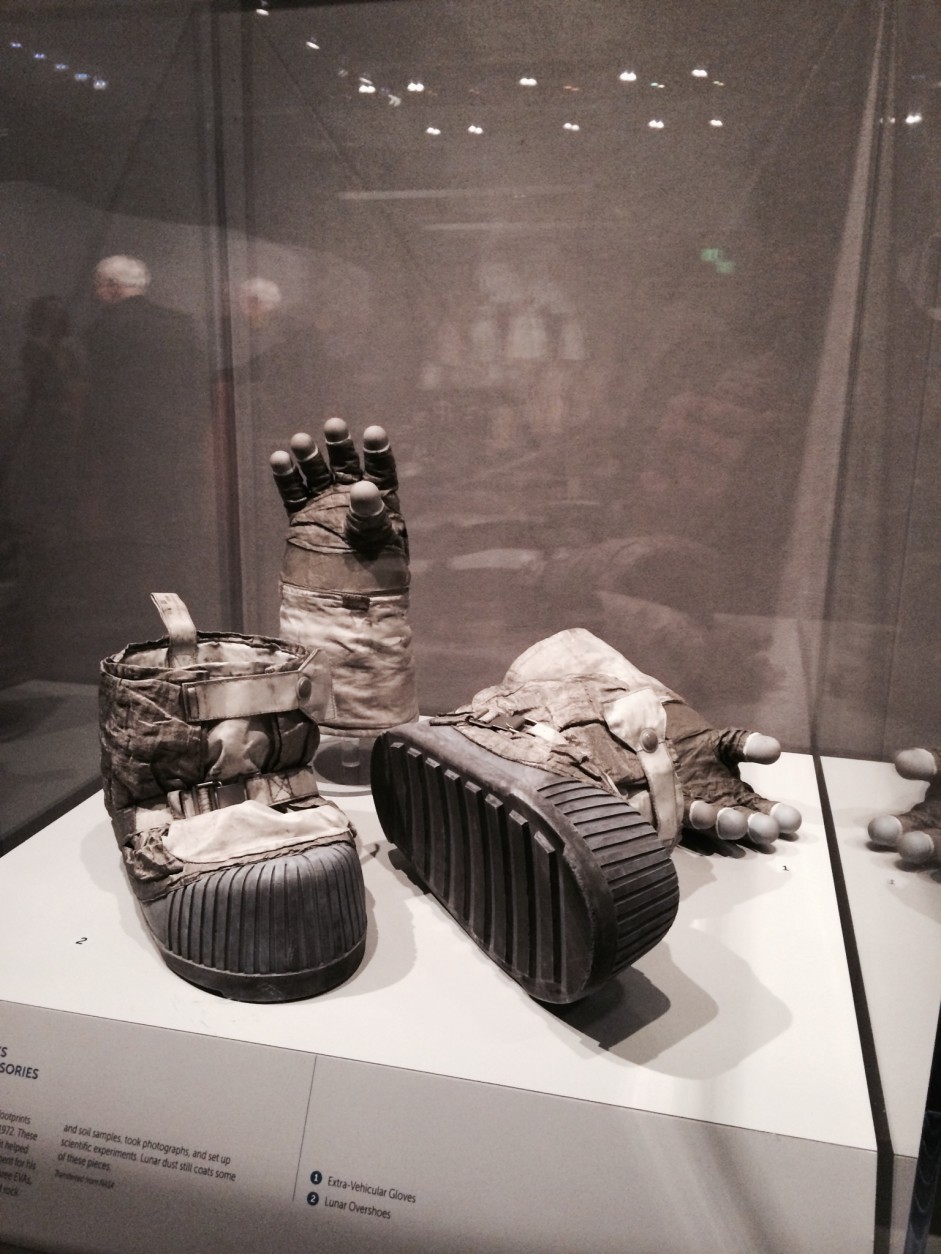
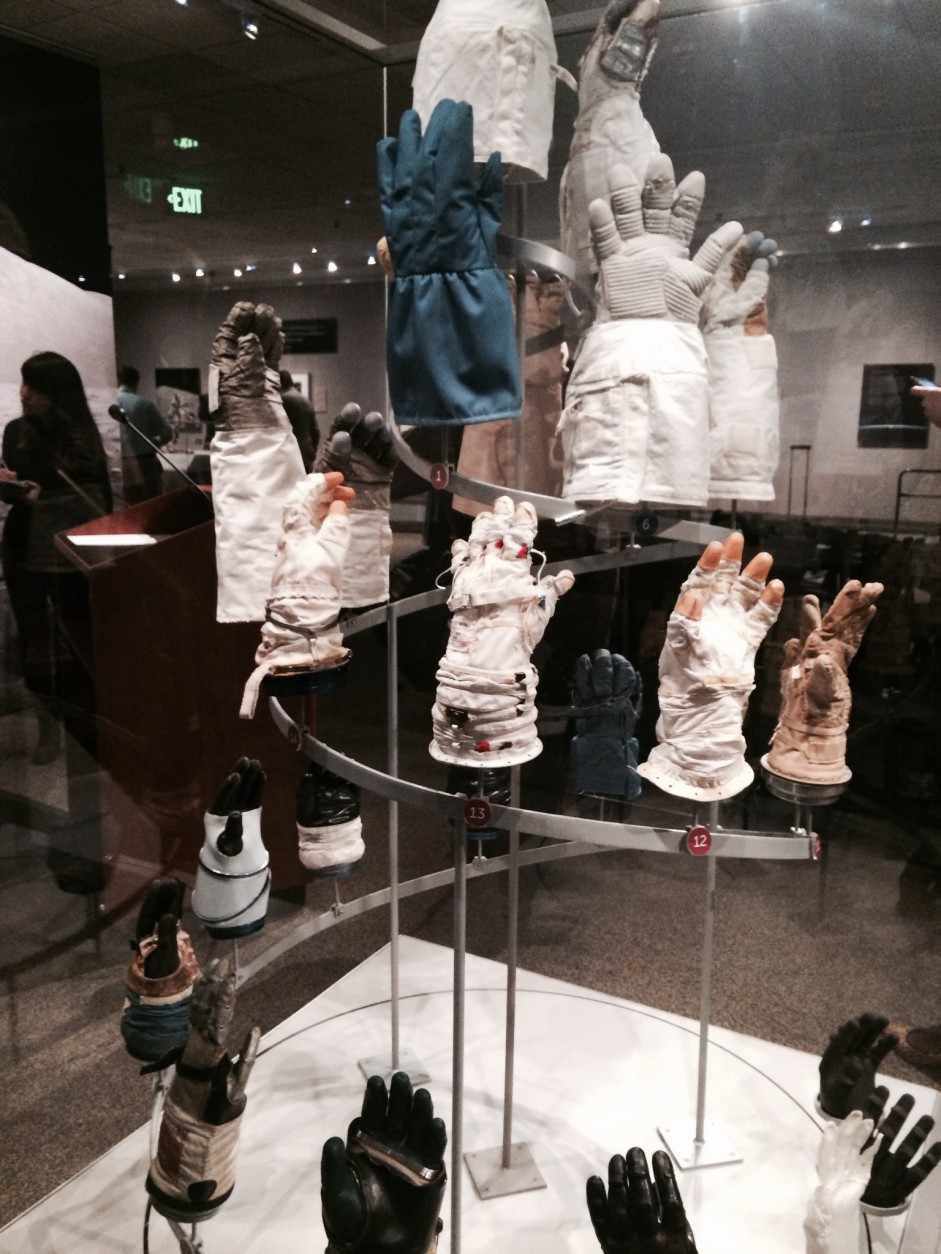
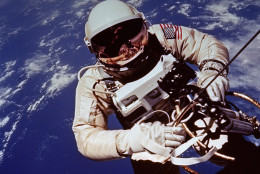
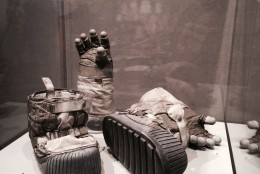

Dick Uliano, wtop.com
WASHINGTON — This year the nation will mark the 50th anniversary of America’s first spacewalk – when astronaut Ed White stepped outside his Gemini capsule floating at the end of a tether, high above Earth.
And the Smithsonian Air and Space Museum is commemorating the event with a special exhibit “Outside the Spacecraft” that pays tribute to U.S. spacewalkers and tells their stories.
“Doing a spacewalk is in some ways the most natural, but also the most unnatural thing a human being can do,” says John Grunsfeld, former space shuttle astronaut and a veteran of eight spacewalks to repair and service the Hubble Space Telescope.
Spacewalking is tough business. In the vacuum of space, a small tear in a cloth spacesuit could suffocate an astronaut. A spacewalker could also be killed if struck by even a tiny piece of space debris hurtling through the void at 17,400 miles per hour. Perhaps even more frightening, an astronaut inadvertently unlatched from a tether could float away.
So what’s so natural about spacewalking? Why do it?
“If you go to space, or you go on a vacation, what do you do? Well, you don’t live in the hotel room you go outside and explore,” says Grunsfeld, who has flown on five space shuttle missions and is currently NASA’s Associate Administrator for the Science Mission Directorate.
The exhibit includes spacewalking tools, including some designed by Grunsfeld. Other artifacts include the specialized gloves worn by spacewalking astronauts and lunar boots worn by Apollo astronaut Eugene Cernan — the last man on the moon.
“They were the last thing, literally, to touch the surface of the moon, as he left,” says the exhibit’s curator Jennifer Levasseur.
Also on display are Ed White’s Gemini spacesuit and a camera used on the surface of the moon. The exhibit includes photographs and art work.
Since Ed White first stepped outside his Gemini spacecraft June 3, 1965, spacewalking astronauts, conducting what NASA calls “extra-vehicular activity” have repaired satellites in orbit, explored the moon and built the International Space Station.
What about future spacewalks?
“I certainly think and hope in my lifetime that we see scientists out exploring on the surface of Mars,” Grunsfeld says.
The Smithsonian exhibit opens Jan. 8, at the Air and Space Museum on the National Mall.
Follow @WTOP on Twitter and on Facebook.








